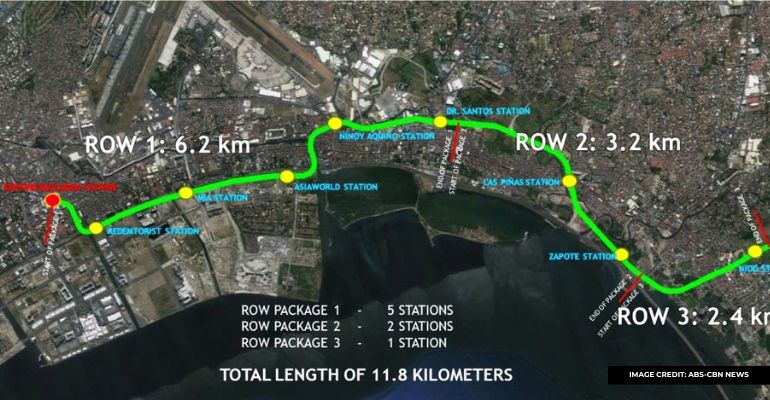Commuters in Metro Manila and Cavite have reason to celebrate as the LRT-1 Cavite Extension is set to open this November partially. The long-awaited project aims to significantly cut travel time between Baclaran and key areas in Cavite. It aims to provide a faster and more efficient alternative to congested roads. Continue reading to learn more about the LRT Cavite Extension Route Map!
The partial opening includes several new stations, each strategically placed to serve high-traffic areas. Among the notable stops is the Ninoy Aquino LRT Station, located near the Ninoy Aquino International Airport (NAIA). This station is expected to benefit travelers by offering a convenient link between the airport and Metro Manila’s rail network.
Also Read: Angat Buhay Helping Out Victims of Typhoon Kristine
Another key station is the Dr. Santos Station in Parañaque, providing access to residential and commercial areas. Meanwhile, the Niog LRT Station in Bacoor, Cavite, serves as the current southernmost stop in this extension. Residents of Niog, Cavite, will now have a direct connection to the heart of Metro Manila. According to Cavite News, this reduces their commute time from the usual 1 hour and 30 minutes down to 25 to 30 minutes.
The full LRT Cavite Extension Route Map will eventually stretch from Baclaran to Niog, Bacoor, covering an 11.7-kilometer track. Once completed, it will add eight new stations, enhancing connectivity between Metro Manila and the rapidly growing Cavite province.
Alt text: Overview of the route of the new LRT-1 extension with a total length of 11.8km
The LRT Line 1 Cavite Extension project is part of the government’s broader Build, Build, Build program, which aims to improve infrastructure and boost economic growth. According to officials, the project’s completion will accommodate an additional 80,000 daily passengers. This alleviates congestion and promotes more sustainable urban mobility.
As the opening date approaches, residents are encouraged to familiarize themselves with the LRT Cavite Extension Route Map to plan their commutes. The new stations promise not only shorter travel times but also a smoother, more comfortable commuting experience.
For more information about the new extension route map, check out the commonly asked questions below.
Also Read: Duterte Admits He Had a Death Squad as Mayor of Davao City
How will the LRT-1 Cavite Extension affect real estate prices in Cavite?
The LRT-1 Cavite Extension is expected to boost real estate demand and property values in Cavite, particularly near stations like Niog LRT Station. Improved connectivity to Metro Manila makes Cavite more attractive to homebuyers and investors. Developers often capitalize on new infrastructure projects, building residential and commercial complexes near transit hubs. For current homeowners in areas like Niog, Cavite, this could mean a significant appreciation in property value over time.
What environmental benefits could the LRT-1 Cavite Extension bring to the Philippines?
The LRT-1 Cavite Extension could contribute to reducing the carbon footprint by encouraging more people to switch from private vehicles to public transit. With fewer cars on the road, there will likely be a decrease in greenhouse gas emissions and air pollution. Additionally, modern rail systems like the LRT-1 are energy-efficient. These can help the Philippines move towards more sustainable urban transportation solutions that align with global climate goals.
How does the LRT-1 Cavite Extension compare to other major transportation projects in Southeast Asia?
The LRT-1 Cavite Extension mirrors similar large-scale transit projects in countries like Malaysia and Thailand, where governments have expanded rail networks to improve connectivity between urban centers and suburban areas. For example, Malaysia’s MRT extension connects Kuala Lumpur to its outer suburbs, much like how the Cavite Extension links Bacoor to Metro Manila. These projects show a regional trend of investing in rail infrastructure to reduce congestion and support economic growth. The Philippines’ commitment to such projects demonstrates its effort to modernize its transport systems and stay competitive in the region.
Overall, the LRT-1 extension addresses the public transportation issue in the area. It provides a more speedy and efficient commuting process for the general public. With its partial operations being successful during its test run, commuters are eager to experience it once it’s fully completed in 2027.
Keep Reading: Typhoon Kristine Delays October 2024 CPALE

Leave a Reply